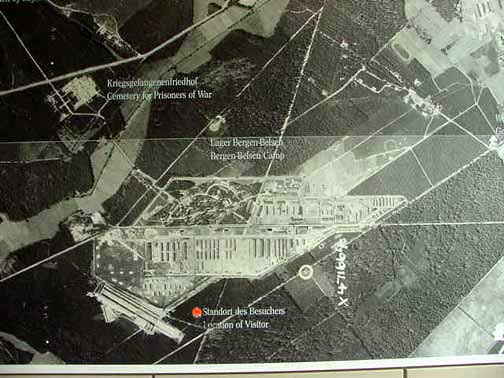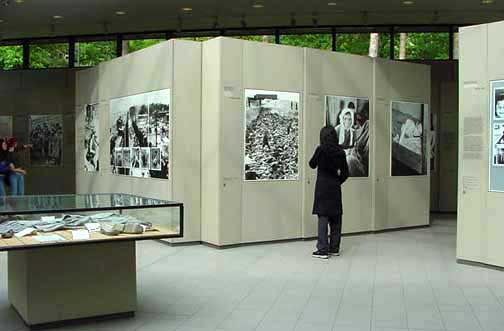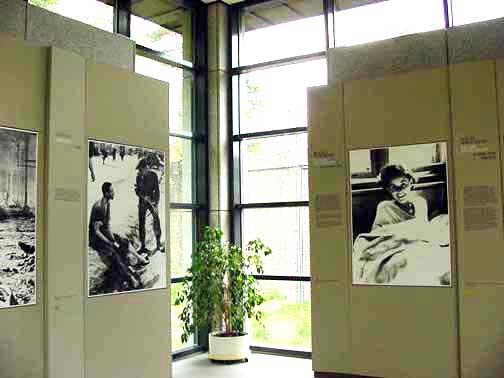Bergen-Belsen Museum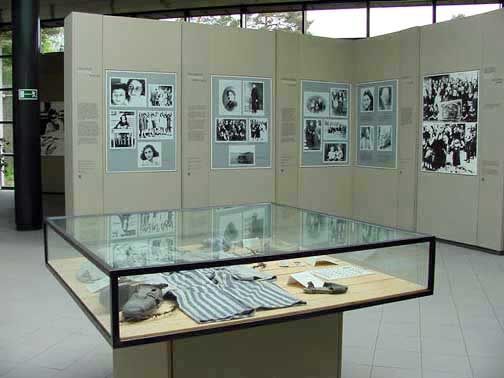 A Documentation Center and an exhibition on the history of the camp was first opened at Bergen-Belsen in 1966. A new permanent exhibition was opened in April 1990. It contained photos taken at Bergen-Belsen, along with a history of the Nazi persecution and systematic extermination of the Jews. The photo above shows the Museum as it looked in 2002. On Sunday, October 28, 2007 a new museum was opened at Bergen-Belsen. It is a concrete structure that cost 13 million euro to build. The following quote about the new museum is from a BBC news article:
Germany has inaugurated a new museum at the site of the Nazi concentration camp where diarist Anne Frank died. The new exhibition centre at Bergen-Belsen, in the north of Germany, highlights the fates of those who died at the camp during World War II. Among the exhibits are the drawings and diaries of Jews imprisoned there, plus video statements by survivors. Some 100 survivors were at the ceremony at the camp, where an estimated 50,000 Jews perished during the Holocaust. Power of memory The new exhibition is part of an effort to reconstruct the lives of those sent to Bergen-Belsen during the Nazi occupation of Europe. It contains photographs, prisoners' records and objects donated by the survivors. Among the prominent survivors of Bergen-Belsen is Gerd Klestadt who was a child of eleven when he was sent to the exchange camp that opened at Bergen-Belsen in 1943. Klestadt's father died in the camp, but his mother and brother survived. Klestadt's grandmother was killed at the Sobibor death camp. Klestadt now lives in Luxembourg and frequently speaks about his ordeal at Bergen-Belsen to a new generation of students; he was not among approximately 100 survivors who were invited to attend the opening ceremony of the new museum. The photos below were taken at the old Bergen-Belsen museum. 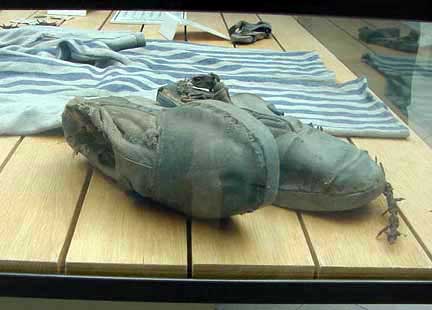 Display case shows striped clothes worn by some of the prisoners in the camp, and a pair of worn-out shoes made with wooden soles. 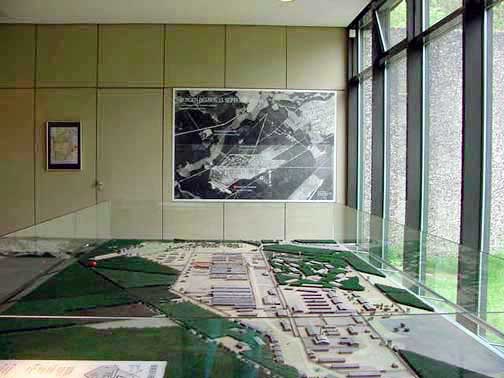 In the lobby of the old Museum, there is a scale model of the former concentration camp. An aerial photo on the wall, taken by the British Air Force during World War II, shows the layout of the camp. A movie about the liberation of the camp is shown several times each day; the English version is shown at 3 p.m. |
